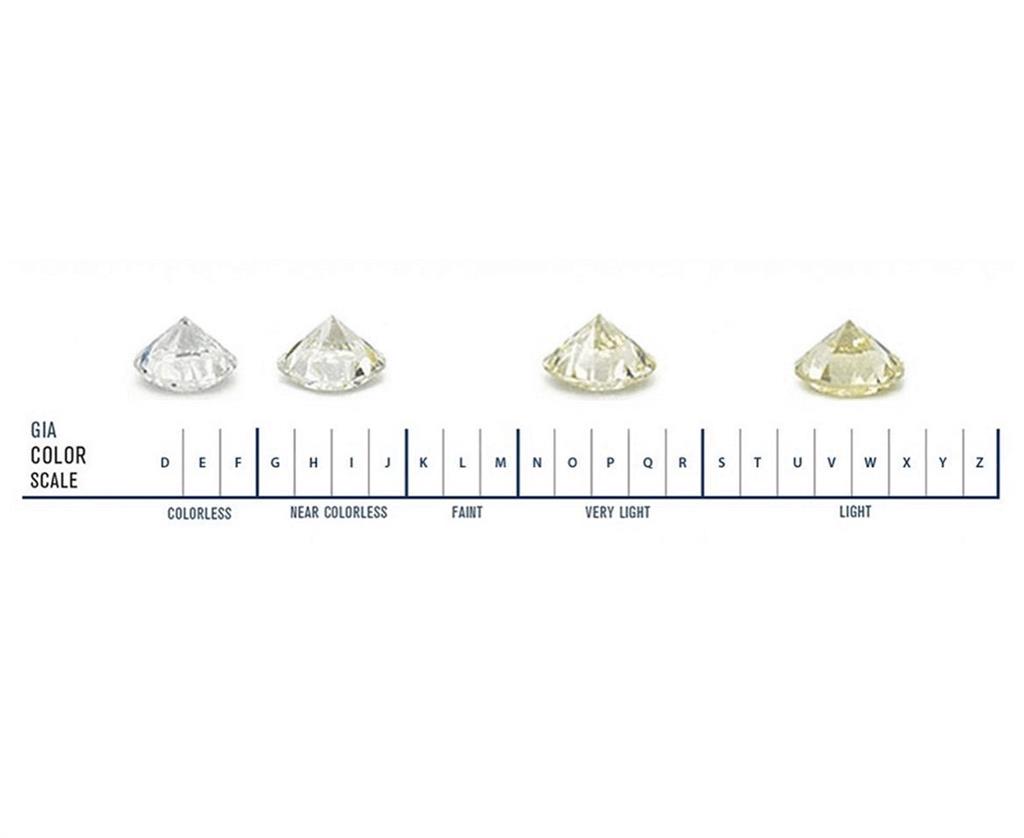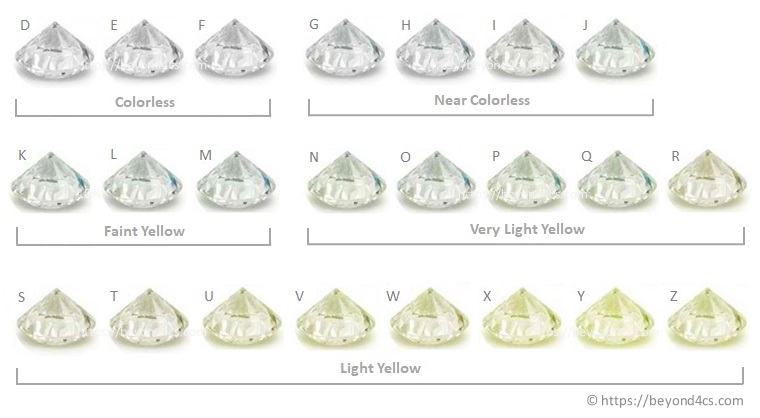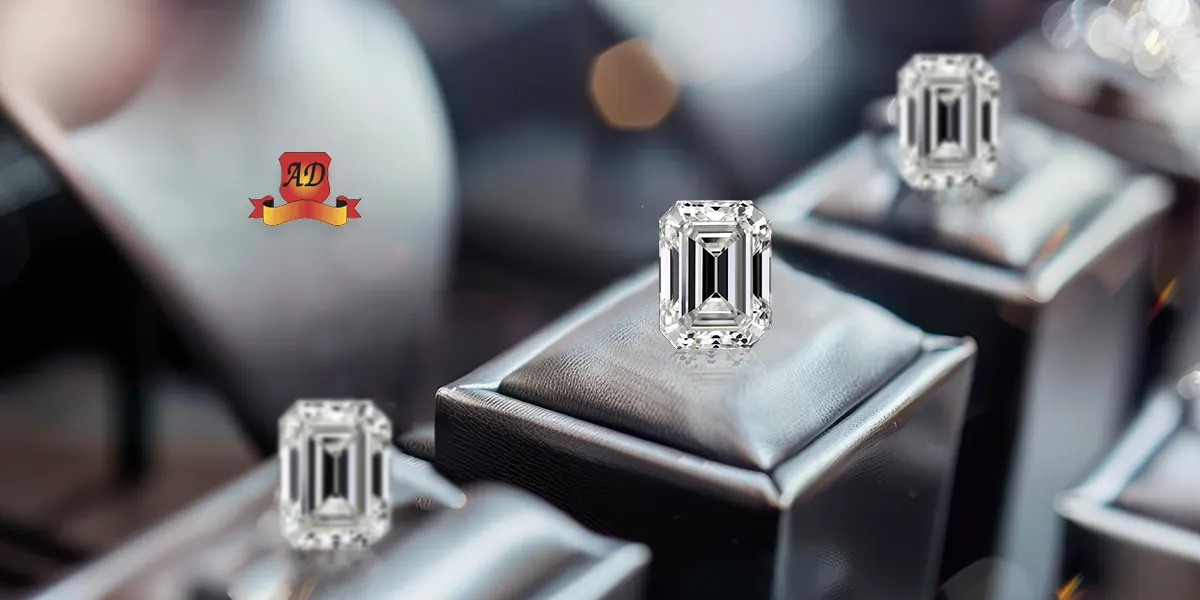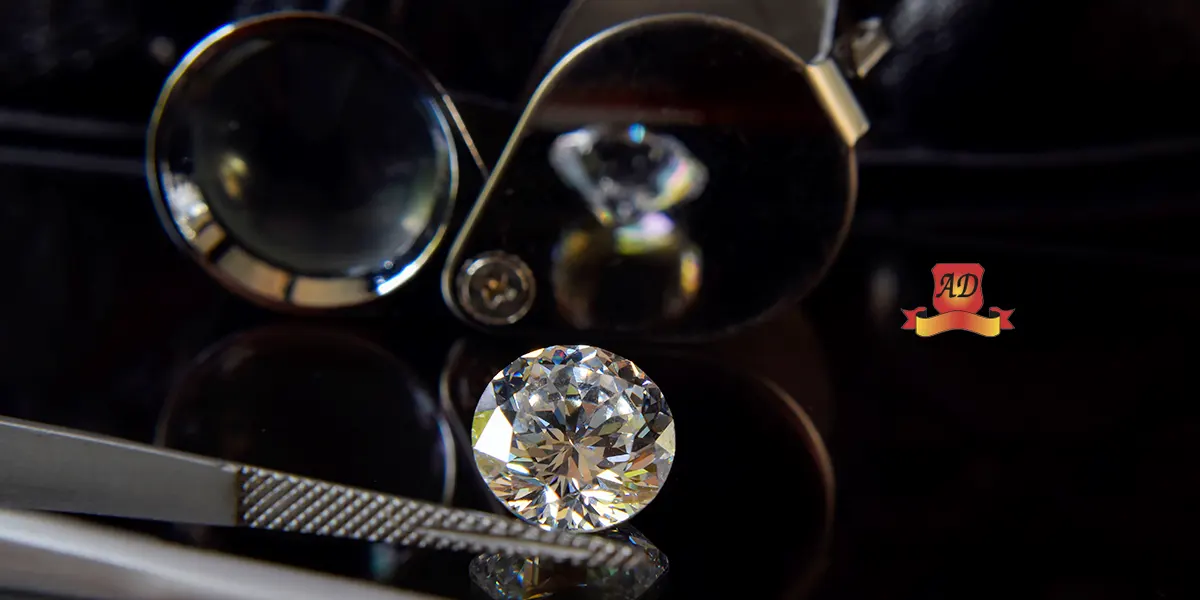GIA’s color-grading scale for diamonds is the industry standard. It begins with the letter D to Z that represents color shades from yellow to brown
One of the 4 Cs- Diamond color grading scale is an important grading industry standard. It may seem that color observation is a thing for the naked eye, but it is more complicated than you think.
Learn about the GIA color grading scale and everything that is to know about the colors of diamonds—starting from how GIA defines the colors of diamonds? Does the color grade matter? Where do fancy diamonds stand in the color grade? And much more.
The GIA Grading Scale:

The GIA's color-grading scale begins with the color D, representing colorless, and continues with increasing hues to the letter Z. Each grade has a specified color, observed under controlled lighting and precise viewing conditions. The color of the diamond is all about what is hidden from the naked eye. They are valued by how closely they approach colorlessness- the lesser the color, the higher their value.
The GIA D-Z scale is divided into five categories:
· Colorless — D, E, F.
· Near Colorless — G, H, I, J.
· Faint — K, L, M.
· Very Light — N, O, P, Q, R.
· Light — S, T, U, V, W, X, Y, Z.
The diamond value goes up exponentially with each increase in the grade. And, it goes down as the grade decreases.
The Diamond Color Grading- D Z Color Scale

Reference:- naturallycolored.com
One of the 4 Cs- Diamond color grading scale is an important grading industry standard. It may seem that color observation is a thing for the naked eye, but it is more complicated than you think.
Learn about the GIA color grading scale and everything that is to know about the colors of diamonds—starting from how GIA defines the colors of diamonds? Does the color grade matter? Where do fancy diamonds stand in the color grade? And much more.
Does the color grade matter?
Knowing about the colors of the diamonds is one thing and practically applying the theory to buying diamonds is another. It is of utmost importance to carefully examine the 4Cs before purchasing loose diamonds. And, among the 4Cs, color is the most important.
Let us help you in achieving the best of both worlds in prices and diamond superiority.
Every step down the color scale is a notch down in price. There is no actual price pinpoint as to how much it is reduced, but loose diamonds can be proven significant when purchased in bulk. While buying it should be noted that no matter if you are a first-time buyer or a seasoned loose diamond trader, these tips can come to your advantage.
Like, stepping down from a D-color diamond to E- a color diamond will save you a lot of money on engagement rings. However, going down from K to L color scale will merely make any difference in color as well as price.
How diamond color affects its value
The above comparative scale is measured by keeping all the 4 Cs in a similar position with only diversification in the color grade. As interpreted it can be seen that a one-carat D color graded diamond costs around $9,500, while a similar one-carat diamond with a G color graded diamond is valued at $6,750. There is no difference observed if both the diamonds are viewed separately. But, you just saved a whopping $2,750.
Comparing color grade with other qualities of the diamond:

Reference:- beyond4cs.com
· A Diamond lesser than one carat can be paired with the color grade I, J, and sometimes even K if it does not appear with a yellow tint.
· D, E, and F color graded diamonds exceeding one-carat weight can be paired with clarity grades of F, IF, VVS1, and even VVS2.
· Diamond colors G, H and I work well with VVS2, VS1, and VS2 clarity.
· Colour grades of J, K, and L pair well with SI1 or lower.
Off the color charts - Fancy Diamonds:
Diamonds that have a color grade beyond the D-Z scale or have a tint other than yellow are considered Fancy Diamonds. These diamonds are not graded similar to other "colorless" diamonds. Rather their value is derived by the color intensity that ranges from Light at the lower end to Vivid at the high end. Color intensity is an integral part of purchasing fancy diamonds. Depending on the color saturation, intensity, and hue, diamonds can have a lesser or a more enhanced value.
When purchasing loose diamonds now you have an array of options to explore. But for a more skilled eye, there is always a better option to select a certified diamond trader to help you select just the right diamonds.
Knowing about the colors of the diamonds is one thing and practically applying the theory to buying diamonds is another. It is of utmost importance to carefully examine the 4Cs before purchasing loose diamonds. And, among the 4Cs, color is the most important.
Let us help you in achieving the best of both worlds in prices and diamond superiority.
Every step down the color scale is a notch down in price. There is no actual price pinpoint as to how much it is reduced, but loose diamonds can be proven significant when purchased in bulk. While buying it should be noted that no matter if you are a first-time buyer or a seasoned loose diamond trader, these tips can come to your advantage.
Like, stepping down from a D-color diamond to E- a color diamond will save you a lot of money on engagement rings. However, going down from K to L color scale will merely make any difference in color as well as price.
Are you looking for the best-certified diamond dealers to buy the diamonds?
Get in Touch Now!





